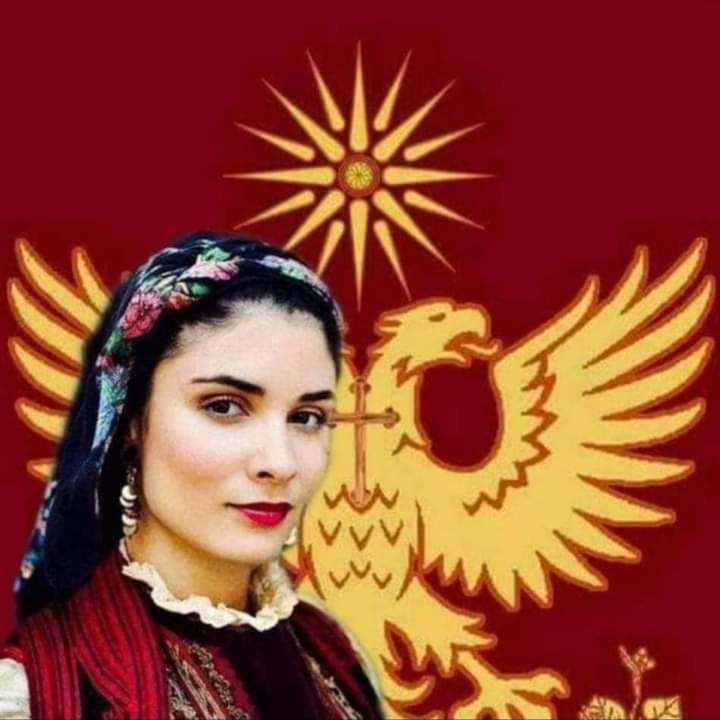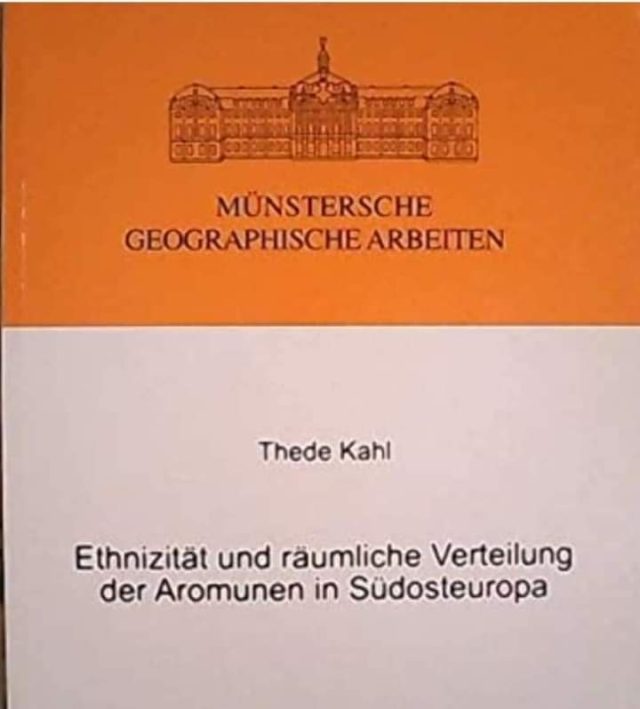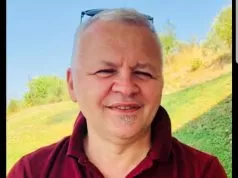Sipas profoserorit Austriak Dr. Thede Kahl, që nga momenti i krijimit të kombit dhe shtetit fetar ortodoks rumun, apo lindja e idesë kombëtare rumune, për të krijuar një komb të madh ortodoks rumun lindi ideja që praktikisht jo vetëm rumunët që jetojnë në shtetin e sotëm quanin Rumania, por së bashku me rumunët me origjinë dake, por edhe të gjithë popujt, që dikur quheshin vlleh, të cilët për nga kombësia, gjuha, raca popuj me origjinë iliro-pellazge, të cilët, në lashtësi nuk flisnin rumanisht, arumune etj, por flisnin. Gjuha ilire, e cila si pasardhëse i përgjigjet gjuhës së sotme shqipe.
Por me rënien e tyre dhe sundimin e vazhdueshëm për shekuj nën pushtimin romak me dhunë dhe represion të detyruar dhe shkombëtarizimi u asimiluan dhe sot disa i quajnë vllehë ose arumunë dhe disa cincarë, por gjuha që ata flasin është e ashtuquajtura gjuhë. Vllahët që i kanë rrënjët në latinishten e lashtë vulgare, të ngjashme me gjuhët e krijuara nga kisha bizantine, një gjuhë teknike fetare siç është greqishtja, për të numëruar dhe llogaritur gjithë këtë etni mbi bazën e parimit ortodoks brenda dhe brenda popullit rumun. dhe komb fetar . !!
Pra, është planifikuar që jo vetëm arumunët, në Greqi dhe në Shqipëri, por të gjithë arumunët, së bashku me rumunët meglenë që jetojnë në Maqedoni, istrorumunët në Kroaci dhe në Serbi… Kjo do të thotë që të shihen qëndrimet nacionaliste të rumunëve dhe grupeve etnike. si grupe që ndryshojnë në disa karakteristika gjuhësore dhe etnike, si grupe që janë autoktone, me origjinë ilire dake dhe trake, që bëjnë pjesë në popullin ortodoks, në kombin fetar rumun..
Nga pikëpamja etnografike, kjo është një mënyrë e duke menduar se si, nëpërmjet transformimit të këtyre etnive dhe asimilimit të tyre në një komb artificial rumun, krijon të ashtuquajturën. ideja e krijimit të të ashtuquajturit po realizohet perandori i “Rumanisë së madhe” të kohëve moderne. Të cilat, natyrisht, nuk mund t’i përgjigjen jo vetëm origjinës dhe identitetit të këtyre njerëzve, por edhe fakteve dhe ligjit historik gjatë historisë, si arumuni apo vlleh si grup etnik dhe me disa karakteristika si indigjenë etnografikë dhe gjuhësorë që jetojnë në Shqipëri dhe Greqi. , janë autoktonë jo vetëm në këto vende.
Por ka edhe një grup etnik gjuhësor etnografik autokton në të gjitha pjesët e Ballkanit. Ata ishin të lidhur fort me Bizantin dhe mësuan prej tyre të flisnin më shumë greqisht dhe shqip dhe më vonë u përshtatën, për t’u bërë besnikë qeverisë osmano-turke nëpërmjet konvertimit fetar të besimit mysliman siç ndodhi me të tjerët. .
Ata kurrë nuk kanë pasur kontakte apo kontakte me rumunët modernë në gadishullin verior të Ballkanit për më shumë se 1000 vjet. Ata nuk kanë qenë kurrë në kontakt me Rumaninë dhe Moldavinë. Pra, në parim, kjo është vetëm ideja nacionaliste e shtetit rumun, për ta kthyer këtë etni gjuhësore me origjinë pellazge ilire në këtë pjesë të tij, atë grup.
Kjo është bërë me shekuj. 19. Rumania planifikon të krijojë një sistem arsimor në të gjithë Ballkanin jugor, duke hapur më shumë se 100 shkolla dhe shumë kisha, në bashkëpunim me autoritetet qeverisëse turke, për të trajtuar dhe parandaluar Arumune në pjesë të ndryshme të Shqipërisë dhe pjesë të Ballkanit. Ortodoks rumun. Ne donim që politikat e tyre të vazhdonin të asimiloheshin nga ata që të gjithë flasin gjuhën për të mos u bërë si shqiptarët dhe grekët dhe t’i rumanizonin ata, duke u përpjekur të rivendosnin gjuhën romake që u lanë, si një trashëgimi nga historia e lashtë. në gjuhën e përgjithshme që është rumanishtja sot, dhe kështu edhe më shumë në numër dhe gjuhë për t’i shtuar popullatës rumune. Por ata nuk ia dolën mbanë në këtë.

🇬🇧According to prof. Dr. Thede Kahl, from the moment of the creation of the Romanian Orthodox nation and religious state, or the birth of the Romanian national idea, to create a great Romanian Orthodox nation was born the idea that practically not only Romanians living in today’s state called Romania, but together with Romanians of Dacian origin, but also all peoples, who were once called Vlachs, who by nationality, language, race peoples of Illyrian-Pelagian origin, who, in antiquity did not speak Romanian, Aromanian, etc. but spoke Illyrian language, which as a successor corresponds to today’s Albanian language. But with their fall and continued rule for centuries under Roman occupation by violence and forced repression and denationalization were assimilated and today some call them Vlachs or Aromanians and some Cincars, but the language they speak is the so-called language.
Vlachs who have their roots in ancient vulgar Latin, similar to the languages created by the Byzantine church, a technical religious language such as Greek, to count and calculate all this ethnicity on the basis of the Orthodox principle within and within the Romanian people and religious nation . !!
So, it is planned that not only Aromanians, in Greece and Albania, but all Arumanians, together with Megleni Romanians living in Macedonia, Istro-Romanians in Croatia and Serbia …. This means that the nationalist attitudes of Romanians and ethnic groups seen as groups that differ in some linguistic and ethnic characteristics, as groups that are indigenous, of Illyrian Dacian and Thracian origin, which are part of the Orthodox people, the Romanian religious nation ..
From an ethnographic point of view, this is a way of thinking about how , through the transformation of these ethnicities and their assimilation into an artificial Romanian nation, creates the so-called the idea of creating the so-called the emperor of the “great Romania” of modern times is being realized. Which, of course, cannot answer not only the origin and identity of these people, but also the facts and historical law throughout history, as Arumuni or Vlachs as an ethnic group and with some characteristics as ethnographic and linguistic indigenous people living in Albania and Greece, are indigenous not only in these countries.
But there is also an indigenous ethnographic linguistic ethnic group in all parts of the Balkans. They were strongly associated with Byzantium and learned from them to speak more Greek and Albanian and later adapted, to become loyal to the Ottoman-Turkish government through the religious conversion of the Muslim faith as happened to others. . They have never had contact or contact with modern Romanians in the northern Balkan Peninsula for more than 1,000 years. They have never been in contact with Romania and Moldova.
So, in principle, this is just the nationalist idea of the Romanian state, to turn this linguistic ethnicity of Illyrian Pelasgian origin into this part of it, that group. This has been done for centuries. 19. Romania plans to establish an education system throughout the southern Balkans, opening more than 100 schools and many churches, in co-operation with the ruling Turkish authorities, to address and prevent Arumune in parts of different parts of Albania and parts of the Balkans. Romanian Orthodox.
We wanted their policies to continue to be assimilated by those who all speak the language not to be like Albanians and Greeks and to Romanianize them, Trying to restore the Roman language they left them, as a legacy from ancient history. in the general language that is Romanian today, and so even more in number and language to add to the Romanian population. But they did not succeed in that.
SHËNIM: Marrë nga faqja në Facebook e Avv. Edmond Petraj










































